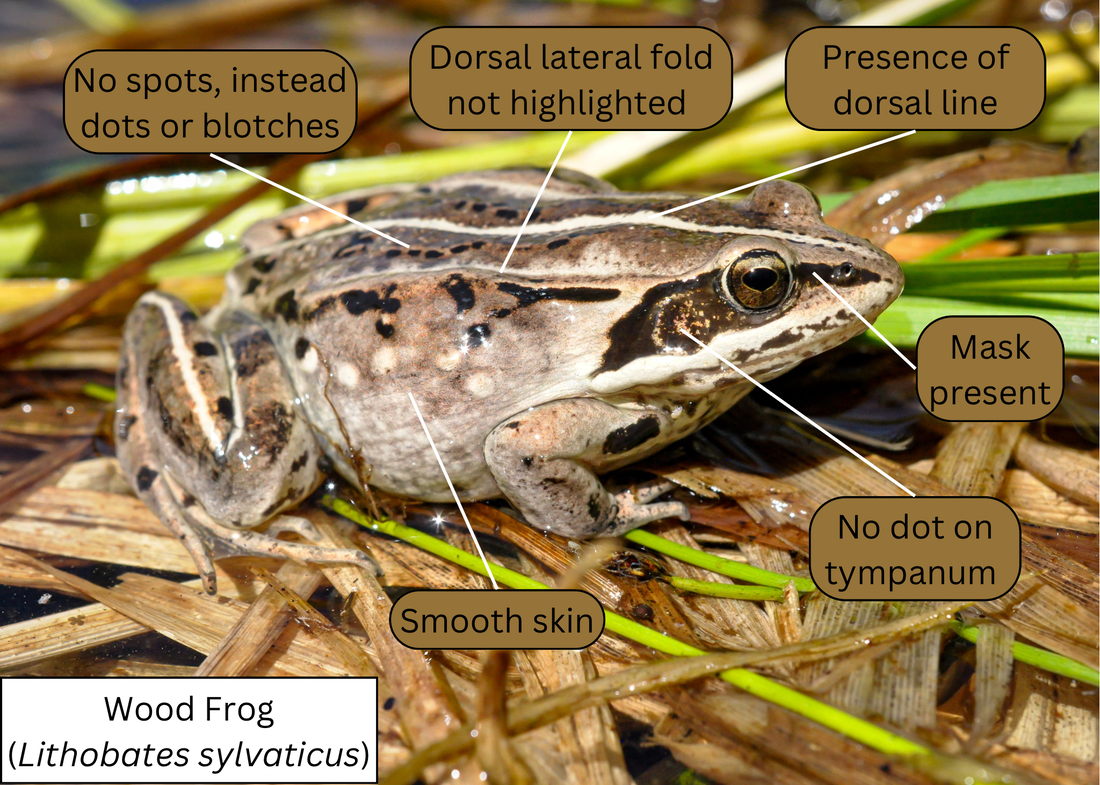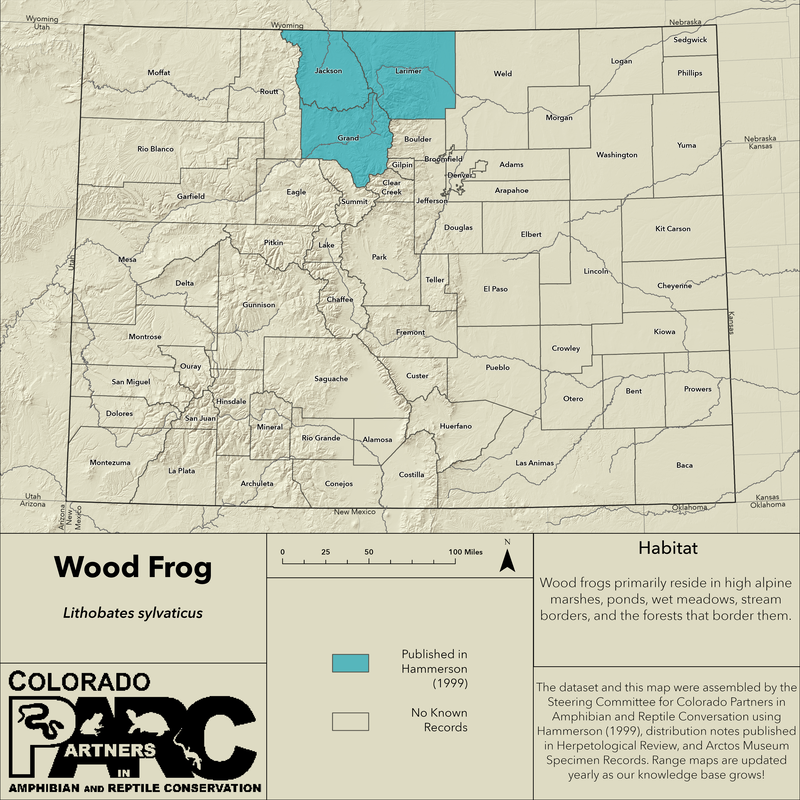|
Identification:
Distribution: Wood frogs are found only in three of Colorado's North-Central counties, at elevations between 7,900-9,800ft (2,400-3,000m). (Hammerson 1999)
Activity: These diurnal frogs are primarily active from mid May to the end of September. They emerge when the ice of their breeding pools thaws out and breeding in those bodies of water can occur. Once they breed they typically disperse into better foraging habitats, sometimes even moving over snow drifts to make it to their desired foraging grounds. (Hammerson 1999)
Conservation Status: While they are globally secure throughout much of their range in North America, Wood Frogs are considered a species of special concern in Colorado.
NatureServe rank: G5 (Globally Secure), S3 (State Vulnerable). |
Habitat: Wood frogs primarily reside in high alpine marshes, ponds, wet meadows, stream borders, and the forests that border them. (Hammerson 1999)
Diet: Wood frogs primarily feed on aquatic invertebrates.
(Hammerson 1999) Defense: Work in Progress
Natural Predators: Work in Progress
|
Cited & Additional Resources
Hammerson G. A. 1999. Amphibians and Reptiles in Colorado. University Press Colorado, Boulder.
Hammerson G. A. 1999. Amphibians and Reptiles in Colorado. University Press Colorado, Boulder.
Account compiled by: Rémi Pattyn
Reviewed by:
Last Updated: 11/15/2022 by Anthony Berardi
Reviewed by:
Last Updated: 11/15/2022 by Anthony Berardi



